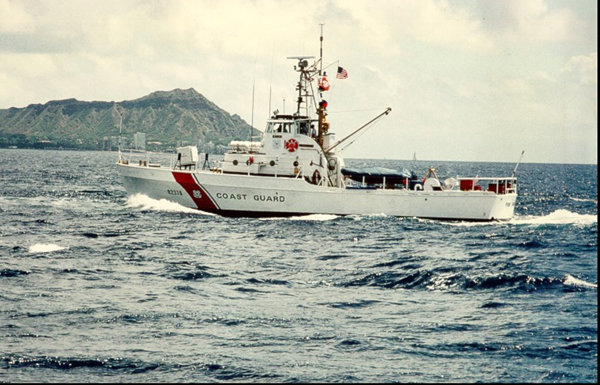 An example of the U.S. Coast Guard’s Point class of cutters..
An example of the U.S. Coast Guard’s Point class of cutters..
When people ponder the name of the exclave – Point Roberts – most attention goes to the word “Roberts,” and any Point Roberts school kid can tell you Point Roberts is named after Henry Roberts, the “esteemed friend” of George Vancouver. But what about the other word in the name?
What is a point, actually? Wikipedia redirects the geographic word “point” to “promontory.” Another online dictionary defined a point merely as a peninsula. Yet another suggested it was a cape, but with shorter cliffs. Whilst there are quite a few geographical features beginning with the word Point, such as Kitsap County’s odd Point No Point, Point Roberts is the only actual town in Washington which begins with the word Point, although there are towns which end with the word Point, such as Hunts Point and Yarrow Point near Seattle. No localities in British Columbia begin with the word.
Given this, it was interesting that in 1964 the U.S. Coast Guard began naming their cutters between 65 and 99feet in length, which hadn’t previously been given names. All of these cutters are named after places beginning with the word Point. These cutters became known as the Point-class cutters.
One such ship, built in 1962 at Curtis Bay, Maryland and previously known as WPB-82332, was christened as the USCGC Point Roberts in January 1964. Named for our very own Point Roberts, Washington, it was operated by four men, but allowing for shift changes, it carried a crew of eight.
The Point-class cutters replaced the aging wooden hull patrol boats in use at the time, and sported a steel hull and aluminum superstructure to save weight. Engine exhaust was expelled through a transom rather than the normal stack, allowing an unobstructed 360-degree view from the ship’s bridge, a vital feature in search and rescue and combat work.
The USCGC Point Roberts never came to its namesake in the Salish Sea. It was used by the Coast Guard almost entirely in Florida, where it performed law enforcement and search and rescue missions for thirty years until it was decommissioned in 1992. In those 30 years of service, it was a workhorse.
Throughout the 1960s and 1970s, it rescued divers and crews from sinking or disabled fishing vessels. It evacuated from large ships injured seamen needing medical help on shore. In the 1980s, much of the work turned to fighting drug smuggling, a fitting job for a ship named for Point Roberts.
On November 28, 1982, she seized the Lago Izabel and Gigi 120 miles off the coast of Georgia carrying twenty-five tons of cannabis. In August 1988 she escorted the Honduran vessel Unicorn Express into Mayport where 1,000 pounds of cocaine was discovered in a hidden compartment. Its 15 minutes of fame arrived in 1986 when it was close to the scene where the space shuttle Challenger blew up. USCGC Point Roberts was used throughout January and February to find and recover debris from the explosion to aid investigators in determining a cause.
After decommissioning in February 1992, the ship was transferred to the Environmental Protection Agency as research vessel Lake Explorer stationed at Duluth, Minnesota.
Today it is kitted with state-of-the-art research equipment to monitor and assess the health of the Great Lakes. It does important work determining the effect of pollution, climate change and other human-caused disturbances to the watershed.
This is one of the many stories you can find in Point Roberts Backstory: Tales, Trails and Trivia of an American Exclave by Mark Swenson. Swenson has written a comprehensive and engaging history of Point Roberts that takes readers on a tour of different sections of the Point, telling their stories. The book spans the period from early Coast Salish peoples to the present day. It has stories of squatters, pirates and smugglers, as well as tales of daily life reciding in an unique xclave.
Purchase your copy at pointrobertsbackstory.com.
Comments
No comments on this item Please log in to comment by clicking here